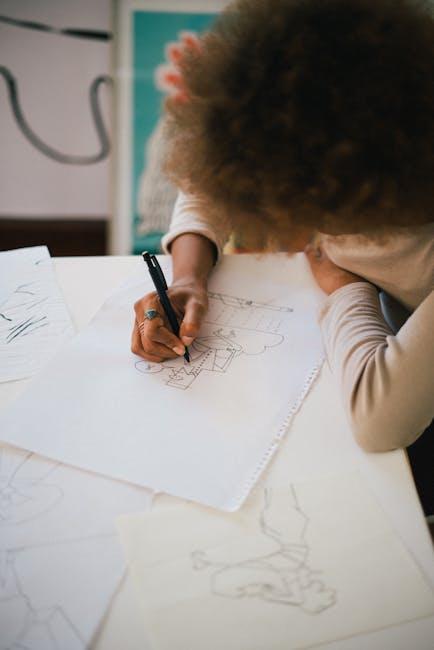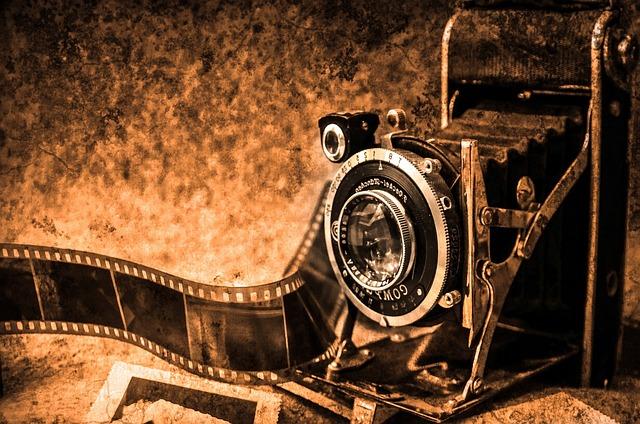In the ever-evolving realm of filmmaking, where the alchemy of art and technology dances under the spotlight, maintaining a clear creative vision is akin to navigating a ship through uncharted waters. As directors, writers, and producers embark on the cinematic journey, they often grapple with the challenge of preserving the essence of their original concept amidst the whirlwind of production demands and unforeseen obstacles. This article delves into the techniques that seasoned filmmakers employ to anchor their creative vision, ensuring that the heart of their story remains vibrant and intact from script to screen. Through a blend of innovative strategies and time-honored practices, we explore how the magic of storytelling is safeguarded in the dynamic world of film development.
Cultivating a Collaborative Atmosphere
In the dynamic world of film development, fostering a spirit of collaboration is crucial for maintaining the integrity of a creative vision. To achieve this, it’s essential to create an environment where every team member feels valued and heard. Encourage open dialogue and brainstorming sessions, allowing ideas to flow freely without immediate judgment. This approach not only enhances creativity but also builds trust and respect among collaborators.
- Inclusive Communication: Use tools and platforms that facilitate seamless communication, ensuring everyone is on the same page.
- Feedback Loops: Establish regular check-ins and feedback sessions to address concerns and celebrate achievements.
- Shared Goals: Clearly define and share the project’s vision and goals, aligning everyone’s efforts towards a common objective.
By prioritizing these practices, filmmakers can cultivate an atmosphere that not only nurtures creativity but also ensures the film’s vision remains cohesive and intact throughout the development process.

Harnessing Storyboards and Visual References
In the intricate dance of film development, storyboards and visual references serve as the backbone of a director’s creative vision. These tools act as the visual script, guiding the team from pre-production to post-production with clarity and precision. By transforming abstract ideas into tangible visuals, storyboards allow filmmakers to experiment with composition, pacing, and narrative flow before the cameras roll. This pre-visualization process is crucial for identifying potential challenges and exploring creative solutions.
Utilizing visual references is equally vital. They provide a shared language for the entire production team, ensuring everyone is aligned with the director’s vision. Whether it’s a color palette, a specific architectural style, or a unique lighting setup, these references help in maintaining consistency and coherence. Consider integrating:
- Inspirational imagery from art, photography, or other films.
- Color swatches to define the mood and tone of scenes.
- Texture samples for costume and set design.
By harnessing these visual tools, filmmakers can navigate the complex journey of production with confidence, ensuring that their creative vision remains intact from the initial spark of inspiration to the final cut.

Balancing Artistic Integrity with Practical Constraints
Maintaining creative vision while navigating the complexities of film production often requires a delicate dance between inspiration and reality. Filmmakers can harness a range of strategies to ensure their artistic intentions remain intact without succumbing to logistical pressures. Communication is key; keeping open lines with your team helps align everyone’s efforts with the core vision. This includes regular check-ins and collaborative brainstorming sessions to solve unexpected challenges without sacrificing creativity.
- Flexibility: Adapt your vision where necessary, but never compromise its essence.
- Prioritization: Identify non-negotiable elements that define your project and focus resources on these.
- Resourcefulness: Utilize available tools and technologies creatively to overcome budgetary or technical limitations.
By integrating these approaches, filmmakers can strike a harmonious balance, ensuring that the heart of their project beats strongly from inception to final cut.

Embracing Flexibility and Innovation
In the ever-evolving world of film development, staying true to a creative vision requires a balance of adaptability and innovation. Flexibility is essential as projects often face unforeseen challenges. Embracing change can lead to unexpected breakthroughs, allowing directors and writers to explore new dimensions of storytelling. By fostering a culture of open-mindedness, teams can pivot gracefully, transforming obstacles into opportunities for creative growth.
Innovation plays a crucial role in maintaining creative momentum. Leveraging new technologies and techniques can enhance the storytelling process. Consider incorporating the following strategies:
- Virtual Reality: Use VR to visualize complex scenes before shooting.
- Collaborative Tools: Employ platforms like Slack or Trello to streamline communication.
- AI-Powered Editing: Experiment with AI to speed up the post-production phase.
By integrating these approaches, filmmakers can not only preserve but also expand their creative vision, ensuring that each project remains fresh and engaging.

